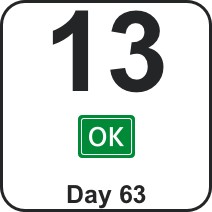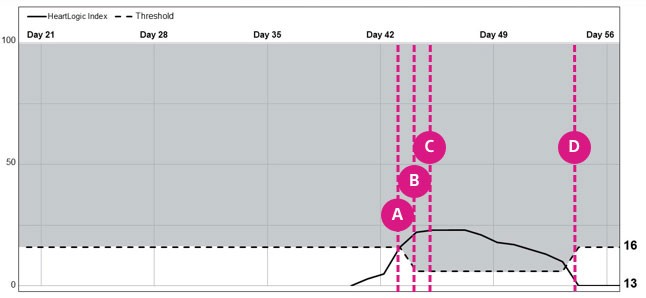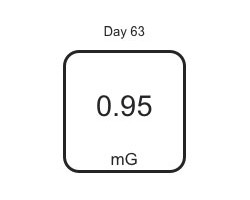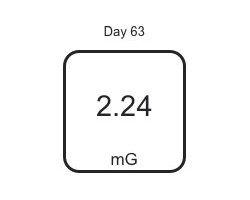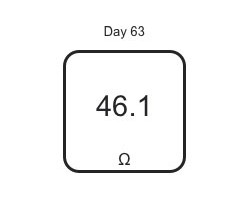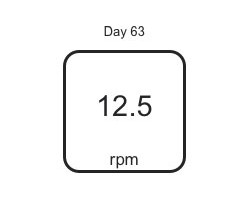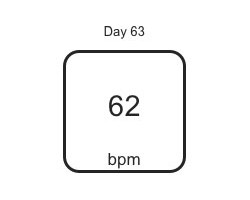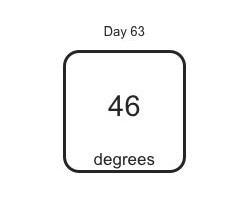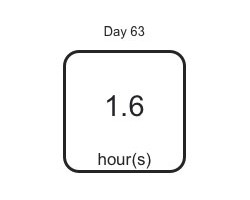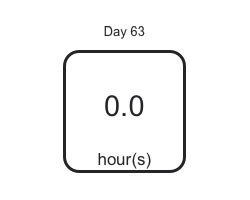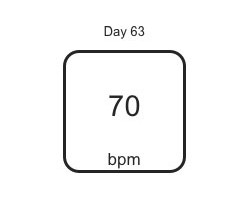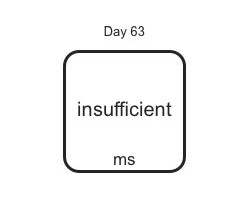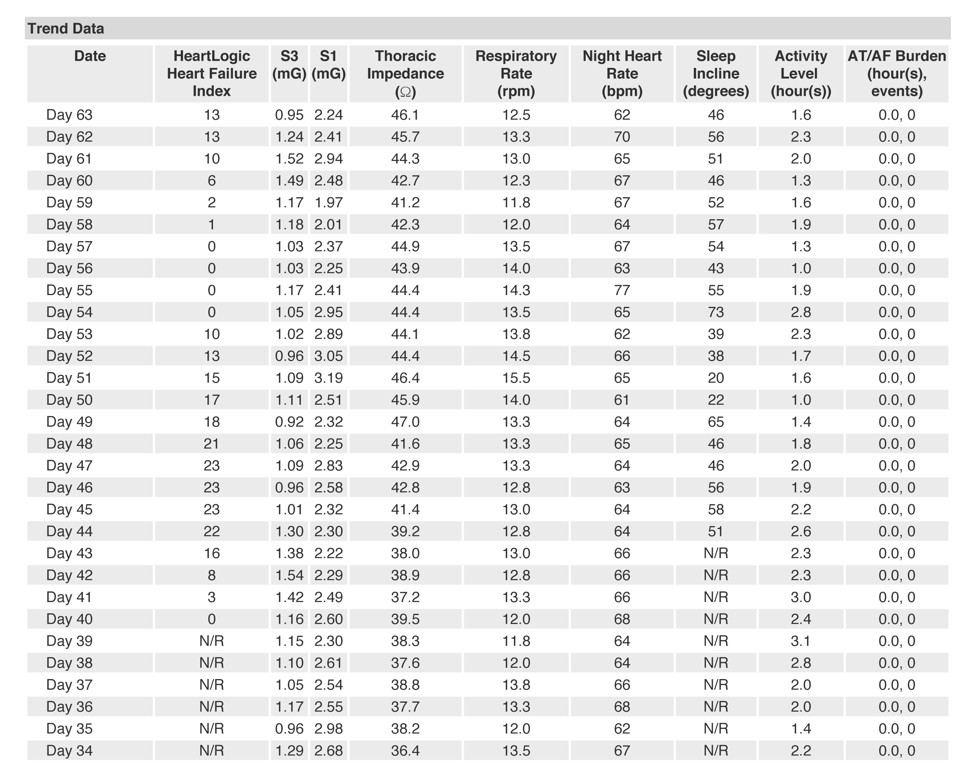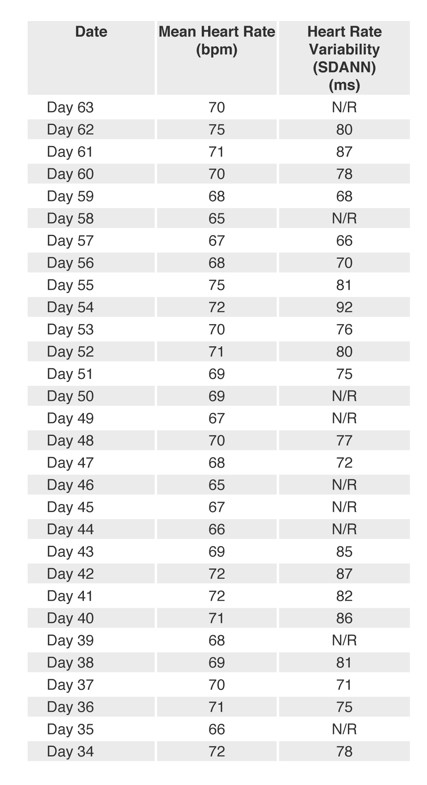
HeartLogic Enables Proactive Care in the Outpatient Setting
Summary
HeartLogic™ Heart Failure Index
Contributing Trends
Day 1: VIGILANT™ CRT-D implanted
(A) Day 43: Patient seen by nurse practitioner for follow-up; patient “feels fine” with no heart failure (HF) symptoms
(B) Day 44:HeartLogic alert issued
- HeartLogic Index is 16
- Contributing Trends: S3 and S3/S1
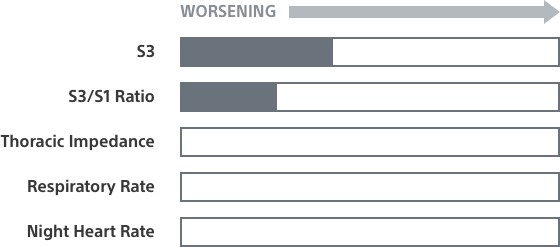
(C) Day 45: HeartLogic Index is 22. Patient seen by Interventional Cardiologist:
- Swelling in right foot
- Excessive sweating
- Shortness of breath
- Furosemide increased (40 mg 3x/day to 4x/day)
(D) Day 54: HeartLogic Index returns to baseline
- S3 measurements trending down to below 1mG
- Thoracic Impedance was not a contributing trend and did not detect worsening HF
Clinical Data
Explore More Case Studies
Explore the case of a 68-year-old woman with a history of complex cardiac issues who was remotely monitored with HeartLogic.
See how a proactive device check discovered an increasing HeartLogic score and led to a medication change.
Find out how a HeartLogic alert led to remote monitoring compliance and a 30-pound weight loss.

